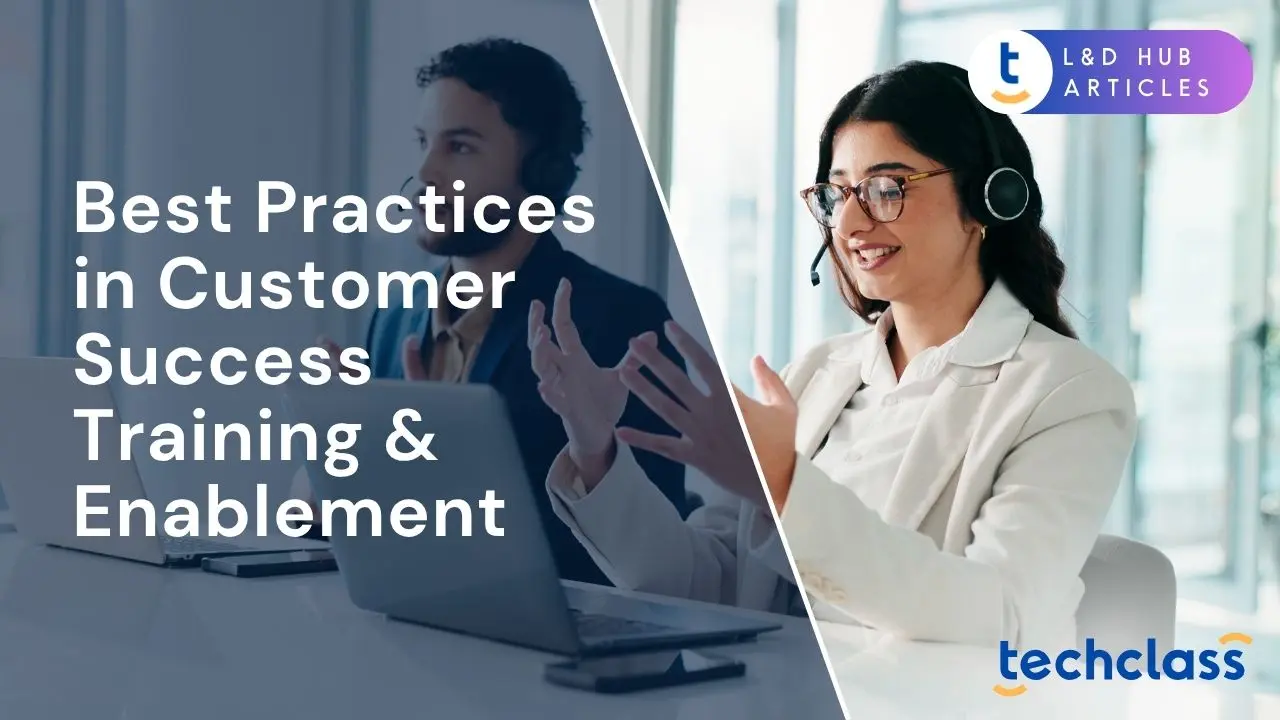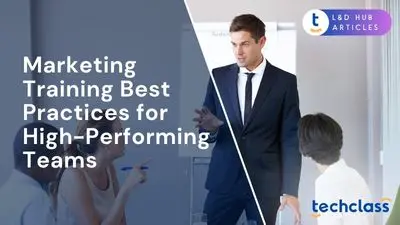
Customer Success has emerged as a critical function for businesses in today’s experience-driven market. As products and services become more commoditized, the quality of customer experience is now a primary competitive differentiator. In fact, studies predict that by 2025, 89% of businesses will compete primarily on customer experience, surpassing traditional factors like price or product features. Companies that excel at customer experience reap tangible rewards: Forrester research finds that **“customer-obsessed” companies grow 2.5× faster and retain 2.2× more customers each year compared to their peers. Conversely, customer expectations continue to rise; over 65% of consumers say their expectations for a good experience are higher today than in the past.
In this climate, it’s not enough to have a great offering; businesses must ensure customers achieve success with that offering. This is where Customer Success Training & Enablement comes in. Customer Success teams are responsible for onboarding new clients, driving product adoption, and preventing churn through ongoing support and relationship management. Training and enablement provide these teams with the skills, knowledge, and resources to excel in that mission.
Why invest heavily in training Customer Success Managers (CSMs)? The business case is compelling. Retaining and growing existing customers is far more cost-effective than acquiring new ones. Acquiring a new customer can cost five times more than retaining an existing one, and a mere 5% increase in retention can boost profits by 25–95%. Moreover, the probability of selling to a happy existing customer is dramatically higher (up to 14× higher) than selling to a new prospect. It’s no surprise, then, that improving customer success is a top strategic priority for 72% of companies, and that over 90% of organizations have established dedicated customer success roles to drive these outcomes. In subscription-based and recurring revenue models especially, well-trained Customer Success teams directly influence renewal rates, expansion sales, and overall customer lifetime value.
This article explores best practices in Customer Success training and enablement that can help organizations in any industry build high-performing teams. From aligning training with business goals to fostering a culture of continuous learning, these practices ensure your Customer Success function is fully equipped to keep customers happy and loyal.
Customer Success Enablement refers to the strategic process of equipping Customer Success teams with the tools, resources, and training they need to effectively drive customer outcomes. It is a discipline analogous to sales enablement, but with a different focus. While sales enablement centers on equipping salespeople to close deals, Customer Success enablement is dedicated to ensuring customers derive maximum value from a product or service over the long term. In other words, it’s about empowering CSMs to foster customer satisfaction, retention, and growth after the initial sale is made.
A robust Customer Success enablement program typically covers several elements:
Investing in Customer Success training and enablement is essentially investing in the customer-centric capabilities of your organization. Given that customer service and success functions are increasingly seen as profit centers (with Gartner predicting 40% of customer service organizations will adopt proactive value-driving strategies by 2025), enabling your team in this area has direct revenue implications. Well-trained CSMs can proactively guide customers to success, thereby increasing loyalty and unlocking expansion opportunities.
Importantly, effective enablement isn’t a one-off onboarding bootcamp – it’s an ongoing commitment. Customer Success teams need continuous support to stay updated on evolving product features, to learn about emerging customer needs, and to refine their approach based on what works. In the following sections, we’ll discuss best practices to build and sustain an enablement program that keeps your Customer Success team at the top of its game.
For Customer Success training to deliver real impact, it must be tightly aligned with both broader business objectives and the customer’s journey with your product. Customer Success as a function exists to improve customer outcomes and contribute to the company’s goals – whether that’s higher retention rates, increased expansion revenue, or stronger brand loyalty. Therefore, a best practice is to ensure all enablement activities map to key business goals and KPIs. For example, if a company’s goal is to improve customer retention by ten percentage points, the CS training program should emphasize skills and strategies for proactive customer engagement, handling at-risk accounts, and maximizing customer value realization (all of which directly affect retention). If upsell or cross-sell revenue is a priority, training might focus on consultative selling skills for CSMs to identify and advocate for expansion opportunities.
Alignment with the customer lifecycle is equally vital. A customer’s experience goes through stages – onboarding, adoption, renewal, and expansion. Your Customer Success team should be prepared to guide customers through each stage, so training modules should correspond to those lifecycle milestones. For instance:
By aligning training content with each stage of the customer journey, CSMs are equipped with practical knowledge for the exact challenges and opportunities they’ll encounter at each step. This makes training more immediately relevant and effective. It also helps embed a customer-centric mindset: the team learns to always consider what the customer is experiencing and needing at a given time, and how that ties back to the company’s success.
Finally, ensure that high-level organizational goals “translate” into Customer Success KPIs and training topics. If the company aims for a certain Net Revenue Retention (NRR) or Net Promoter Score (NPS), the CS enablement program should explicitly address how CSMs can influence these metrics. This might involve training on building customer advocacy programs (to boost NPS) or techniques to increase product adoption (to improve retention and upsells contributing to NRR). When Customer Success training is aligned in this way, the team clearly understands how their learning translates to outcomes that matter, which drives engagement and accountability.
An effective Customer Success training program starts with a clear definition of “what good looks like” in the CSM role. This means identifying the key skills, competencies, and behaviors that a Customer Success Manager should demonstrate to excel. Defining these competencies serves as a blueprint for both hiring and development. Many organizations create a competency framework for Customer Success, detailing the mix of product knowledge, domain expertise, and soft skills required to drive customer outcomes.
Some core competencies and skills commonly important for Customer Success include:
Establishing a competency model not only guides training content but also allows for assessments to identify skill gaps. Some companies have CSMs undergo skills assessments or role-plays to pinpoint areas for improvement. The results can then inform a personalized development plan – perhaps one CSM needs more training in technical product knowledge, while another may need coaching on executive presentation skills. By defining and measuring these competencies, you ensure the training program targets the right skills that drive customer success outcomes.
Onboarding new Customer Success team members effectively is the first step to setting them up for success. A structured, comprehensive onboarding program for CSMs helps them ramp up faster and perform better in those crucial first months. According to research by the Aberdeen Group, organizations with strong onboarding programs see a 54% increase in new-hire productivity. In practice, a CSM onboarding curriculum might span several weeks and cover product training, shadowing senior CSMs on customer calls, learning internal processes, and mastering the use of Customer Success software (such as CRM, customer success platforms, analytics tools, etc.). Effective onboarding shortens the time it takes for new hires to become fully productive, meaning they can start positively impacting customers sooner.
Just as importantly, structured onboarding improves talent retention. Companies that implement thorough onboarding and training for new hires experience significantly higher employee retention. One study found that organizations with a structured onboarding process improved new hire retention by 82%. For Customer Success teams, lower turnover is doubly important: customers benefit from having a consistent CSM who knows their history. Losing a CSM and having to transition accounts is disruptive to the customer relationship. Therefore, investing in onboarding pays off in both employee stability and customer satisfaction.
After onboarding, commit to continuous development for your Customer Success staff. The customer landscape is always changing – new product features roll out, customers’ industries evolve, and best practices in Customer Success mature over time. To keep pace, organizations should create a culture of continuous learning. This can include:
When continuous development is ingrained, Customer Success teams remain agile and competent. They are better prepared to handle new challenges, whether it’s supporting a major product update or navigating an economic downturn that affects customers’ priorities. The end result is a team that doesn’t stagnate – they grow in expertise alongside your customers’ evolving needs.
Customer success does not operate in a silo. Enabling your CSMs also means equipping them to collaborate effectively with other departments. Cross-functional collaboration is a best practice that amplifies the impact of Customer Success training. Consider all the touchpoints: Product development informs CSMs of new features and roadmaps; Sales provides context on customer expectations set during the sale; Marketing offers customer education content and messaging; Support teams handle technical issues that CSMs need to follow up on. A Customer Success Manager sits at the crossroads of these functions, advocating for the customer internally and closing the feedback loop externally.
To foster collaboration:
When Customer Success teams collaborate fluidly with other functions, customers enjoy a seamless journey. They won’t have to repeat themselves as they move from Sales to Success to Support, and they’ll receive consistent messaging. Internally, CSMs benefit by having access to expertise across the company – they know whom to reach out to for a technical answer or a pricing question, because relationships and communication channels are established. This holistic enablement approach ensures that your entire organization is working in concert to make customers successful, which ultimately drives stronger results.
A hallmark of a mature Customer Success enablement program is that it is data-driven and feedback-informed. You should continuously measure the impact of your training efforts and seek input to refine them. As the saying goes, “you can’t improve what you don’t measure.”
Start by identifying which metrics will indicate that your Customer Success team is more enabled and effective. There are both customer-centric metrics and internal team metrics to consider:
Regularly evaluate these metrics and share insights with stakeholders. If certain KPIs aren’t moving in the desired direction, that’s a signal to adjust your training focus. For instance, if product adoption rates remain low, perhaps CSMs need deeper training on driving user engagement or a new toolkit for customer education. On the flip side, celebrate and double-down on areas where training correlates with clear improvements (e.g., a spike in upsell revenue after introducing value-selling workshops).
In addition to quantitative data, collect qualitative feedback from both your team and your customers:
Using data and feedback creates a loop of continuous improvement. Customer Success enablement is not a static project but an evolving process, much like continuous improvement in manufacturing or product development, your training program should iterate. Perhaps initially you focus on core product training, then later emphasize strategic skills as the team matures. Perhaps new data tools become available, so you train the team to leverage customer analytics more deeply.
One particular area of focus should be to regularly reassess and update training content and processes. The business environment changes fast; for instance, new technologies (AI, automation tools) might alter how CSMs work, or an economic shift might change customer priorities. A best practice is to review your Customer Success playbooks and training curriculum at least annually (if not quarterly) to ensure they reflect current realities. By staying data-driven and receptive to feedback, your enablement program remains relevant and impactful, continuously equipping the team to meet the next challenge.
The field of Customer Success is dynamic, customer needs evolve, companies pivot strategies, and unexpected events (like market disruptions or technological changes) can upend established practices. Staying agile and adaptive in your Customer Success training & enablement approach is therefore a crucial best practice. Flexibility ensures that your CS team can weather changes and continue to deliver value to customers under new conditions.
What does agility look like in this context? First, it means being ready to adjust training priorities on short notice when needed. For example, if your business rolls out a new product line or enters a new market, you may need to quickly train the CS team on the nuances of that product or the expectations of that market’s customers. If an economic downturn occurs, perhaps you’ll emphasize training on “customer retention during tough times” or equip CSMs with resources to demonstrate ROI to budget-conscious clients. The enablement team should have a pulse on such changes and be able to respond with updated guidance and education.
It’s also important to recognize that different Customer Success managers may have different needs, and a one-size-fits-all training approach isn’t always best. An adaptive program might offer a mix of learning options – self-paced e-learning modules, live workshops, one-on-one coaching – to cater to various learning styles and schedules. For instance, some CSMs might excel with interactive group trainings, while others benefit from curated articles or micro-learning videos they can consume at their own pace. Providing flexibility in how training is delivered can increase uptake and effectiveness, as 58% of employees prefer to learn at their own pace according to workforce surveys.
Encourage experimentation and innovation in your Customer Success practices as part of being agile. If a CSM comes up with a new approach to engaging customers (perhaps a creative customer webinar series or a novel way of using your product’s data to show value), create an environment where such ideas can be tested and, if successful, rolled out to the whole team. Agility isn’t just reacting to external change; it’s also being open to internal innovation. Make it safe for team members to pilot new customer success tactics, and incorporate the successful ones into your playbooks.
Lastly, agility in enablement means planning for continuous change. You might formally include a “training backlog” or roadmap that is revisited often, acknowledging that new training needs will emerge. During annual planning, assume that some portion of your training calendar will be reserved for unforeseen topics. This mindset helps the organization accept change as a constant, rather than something that derails your enablement efforts.
In summary, agile Customer Success enablement ensures that as your company scales or the world shifts, your team remains resilient, knowledgeable, and ready to deliver exceptional service. It’s about building an enablement program that’s not only robust in content but also flexible in design – ready to bend and evolve without breaking, no matter what the future brings.
Investing in Customer Success training and enablement is ultimately about cultivating a deeply customer-centric culture within your organization. When enterprise leaders and HR professionals champion these best practices, they send a clear message that empowering customers (and the employees who serve them) is a top priority. Over time, this focus creates a positive feedback loop: well-trained CSMs provide outstanding service, which leads to happier customers, which in turn drives business growth and reinforces the value of Customer Success.
For businesses across industries, the takeaway is that Customer Success is not just a department; it’s a philosophy that should permeate how employees are hired, onboarded, and developed. By applying the practices outlined in this article – aligning enablement with strategy, defining the right competencies, onboarding and training continuously, breaking down silos, leveraging data, and staying flexible – organizations set their Customer Success teams on a course to excel. The result is stronger customer relationships and improved retention and revenue outcomes, as countless studies and real-world case studies have shown.
As you implement these best practices, remember that leadership involvement is key. Executive support for training initiatives (e.g. allocating time and budget, recognizing top-performing CSMs, and soliciting customer feedback regularly) will accelerate the impact of your enablement efforts. For HR leaders, partnering with Customer Success managers to tailor professional development plans for the team can ensure that training is not ad-hoc but part of a structured growth path for each CSM.
Customer Success Enablement is the strategic process of equipping teams with tools, training, and resources to drive customer outcomes, which enhances retention, growth, and overall satisfaction.
Training should match each stage of the customer lifecycle—onboarding, adoption, renewal, and expansion—so CSMs are prepared to handle specific challenges and opportunities at every phase.
Core skills include product expertise, industry knowledge, communication, problem-solving, negotiation, and data literacy to deliver value and foster customer relationships.
Ongoing training keeps teams updated on new features, strategies, and customer needs, ensuring agility and long-term effectiveness in a rapidly changing landscape.
By involving other departments in training, establishing clear handoff processes, sharing insights, and aligning goals to create a seamless customer experience.
Regular measurement of KPIs and qualitative feedback helps identify gaps, refine training programs, and ensure efforts directly impact customer and team success.


